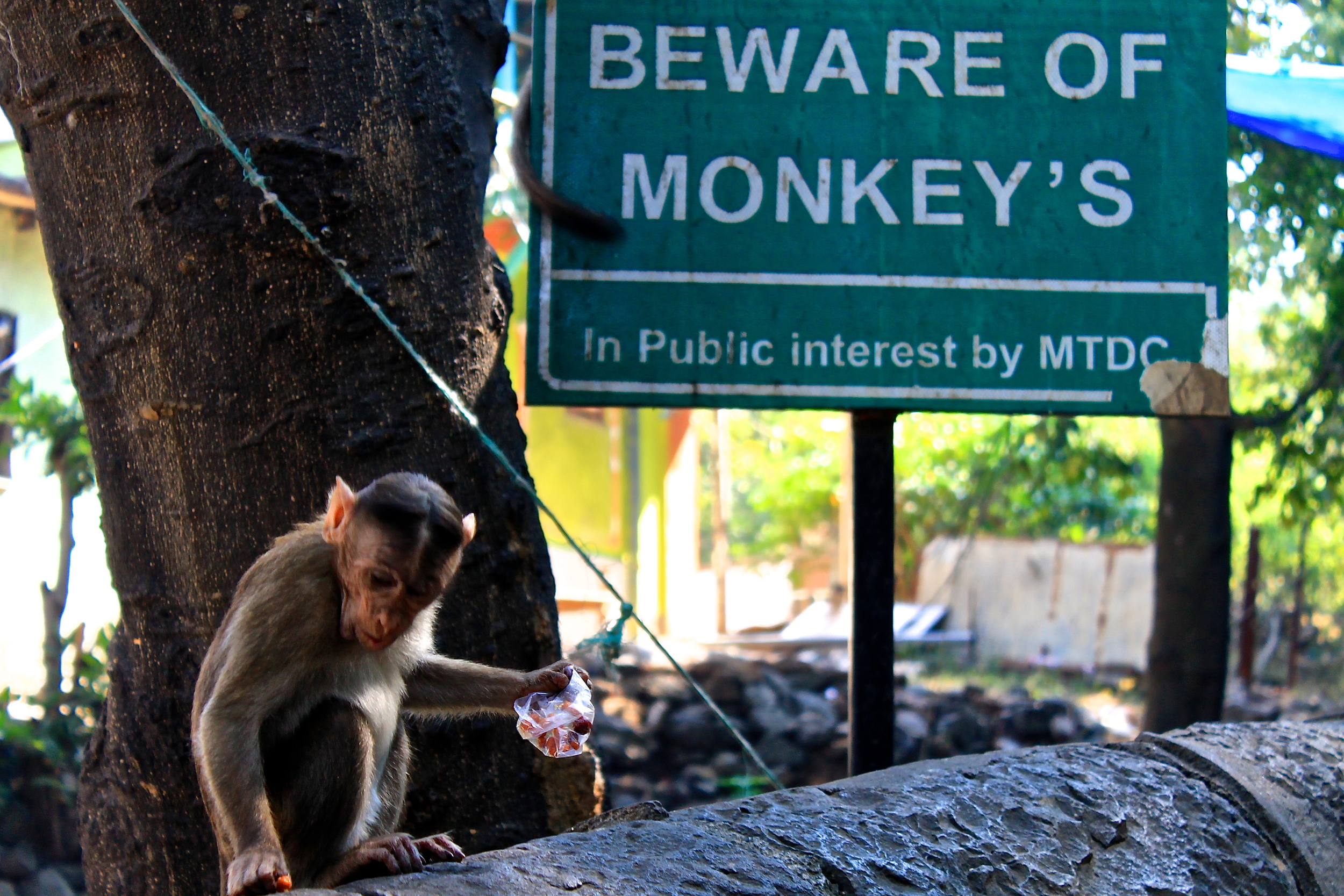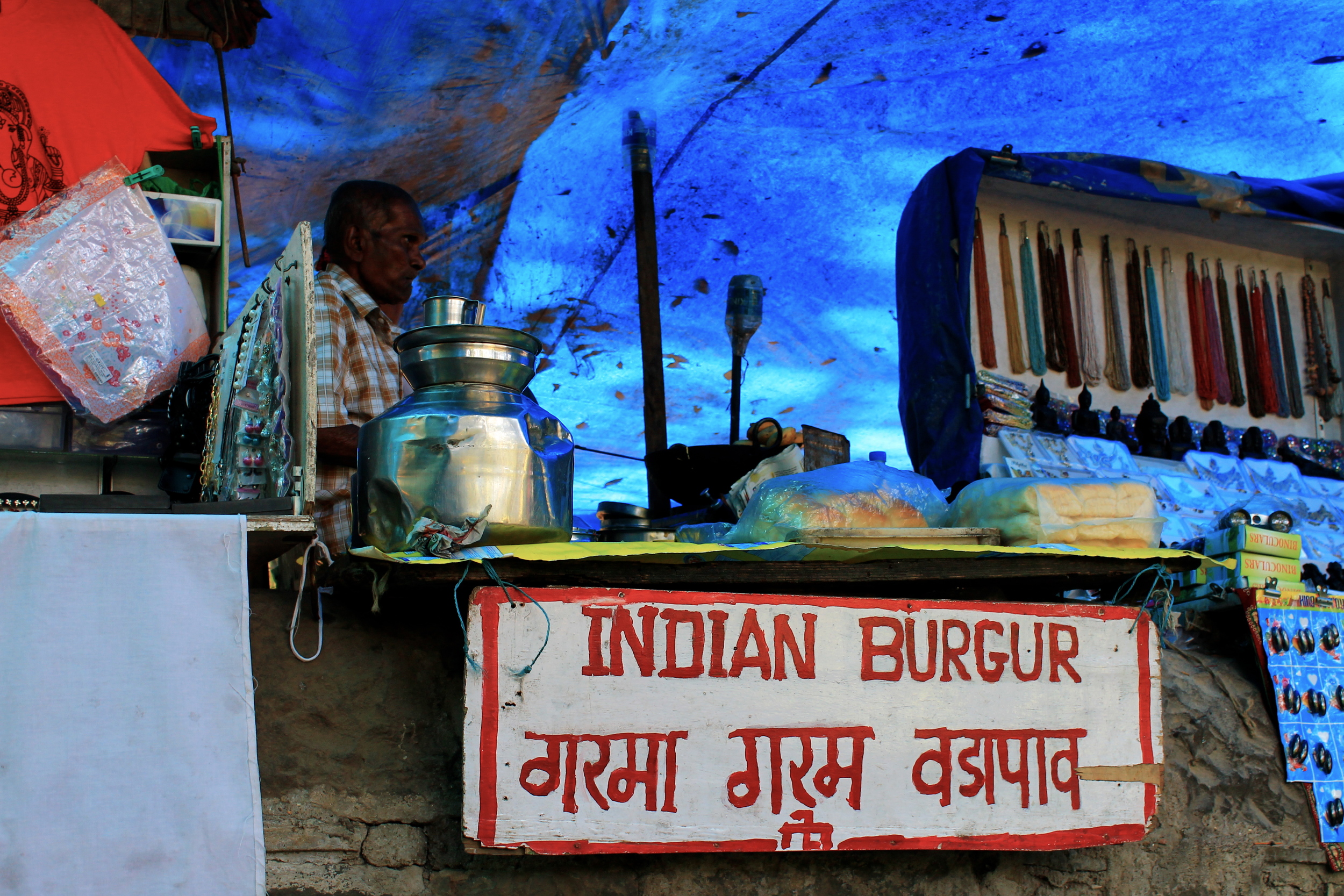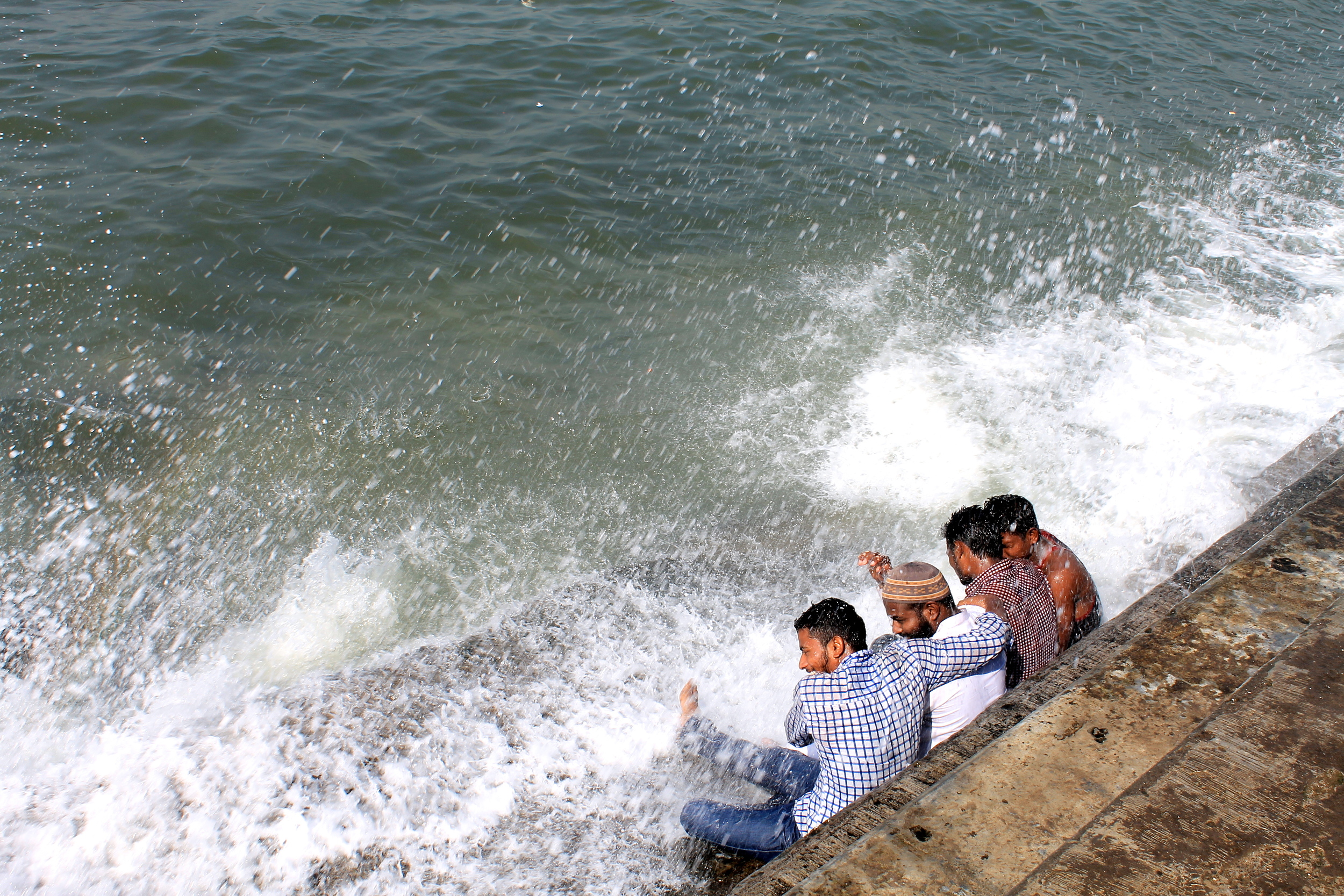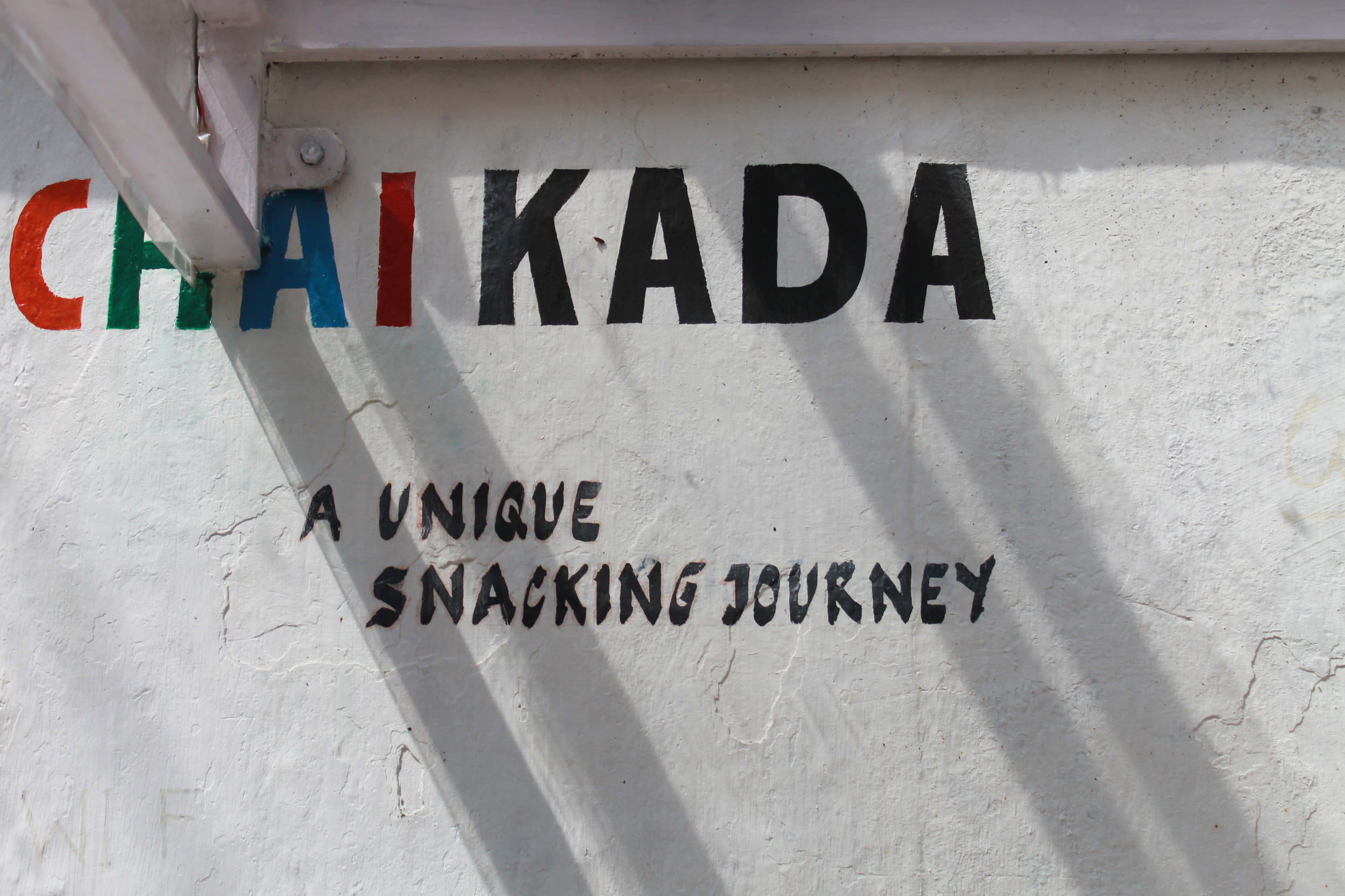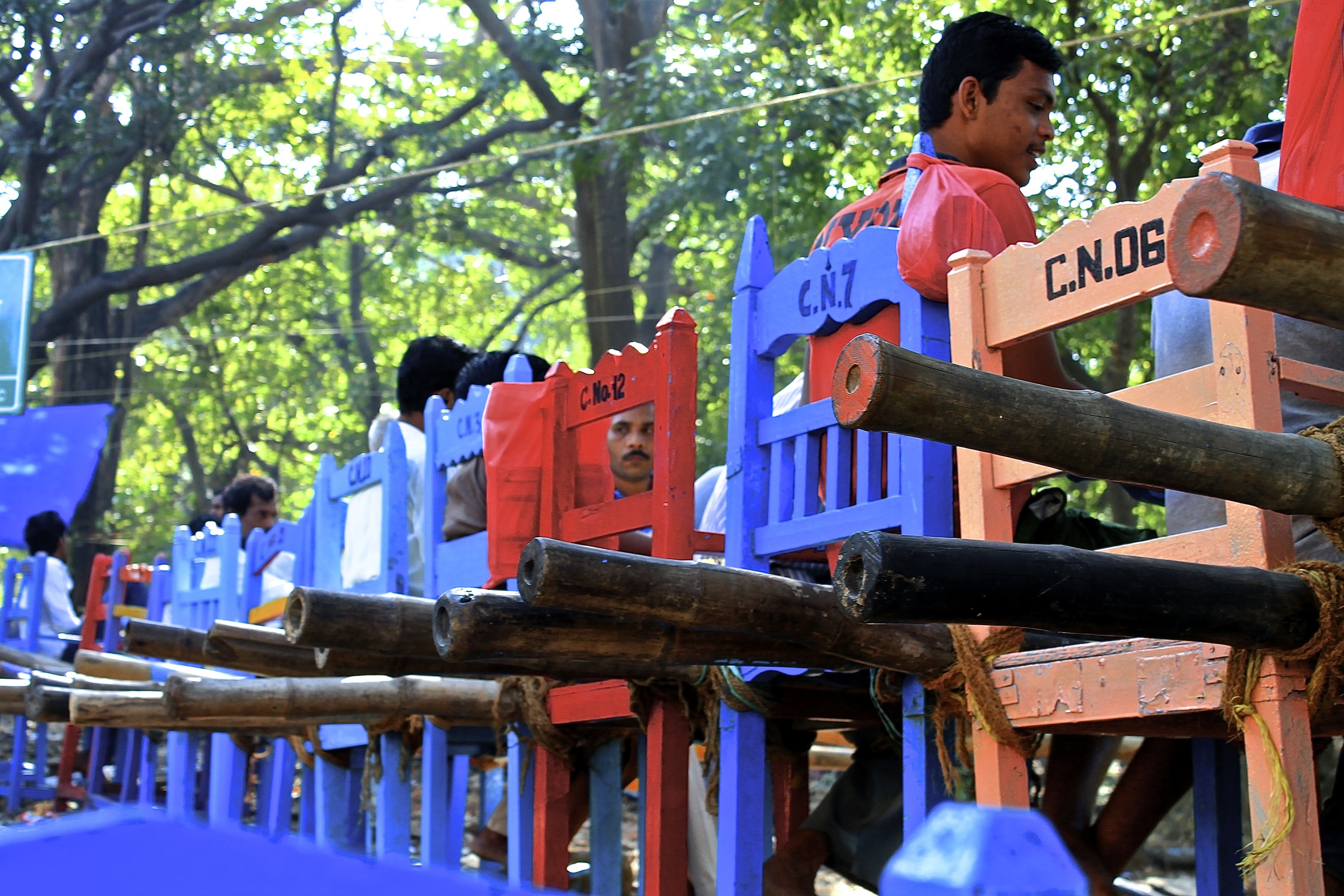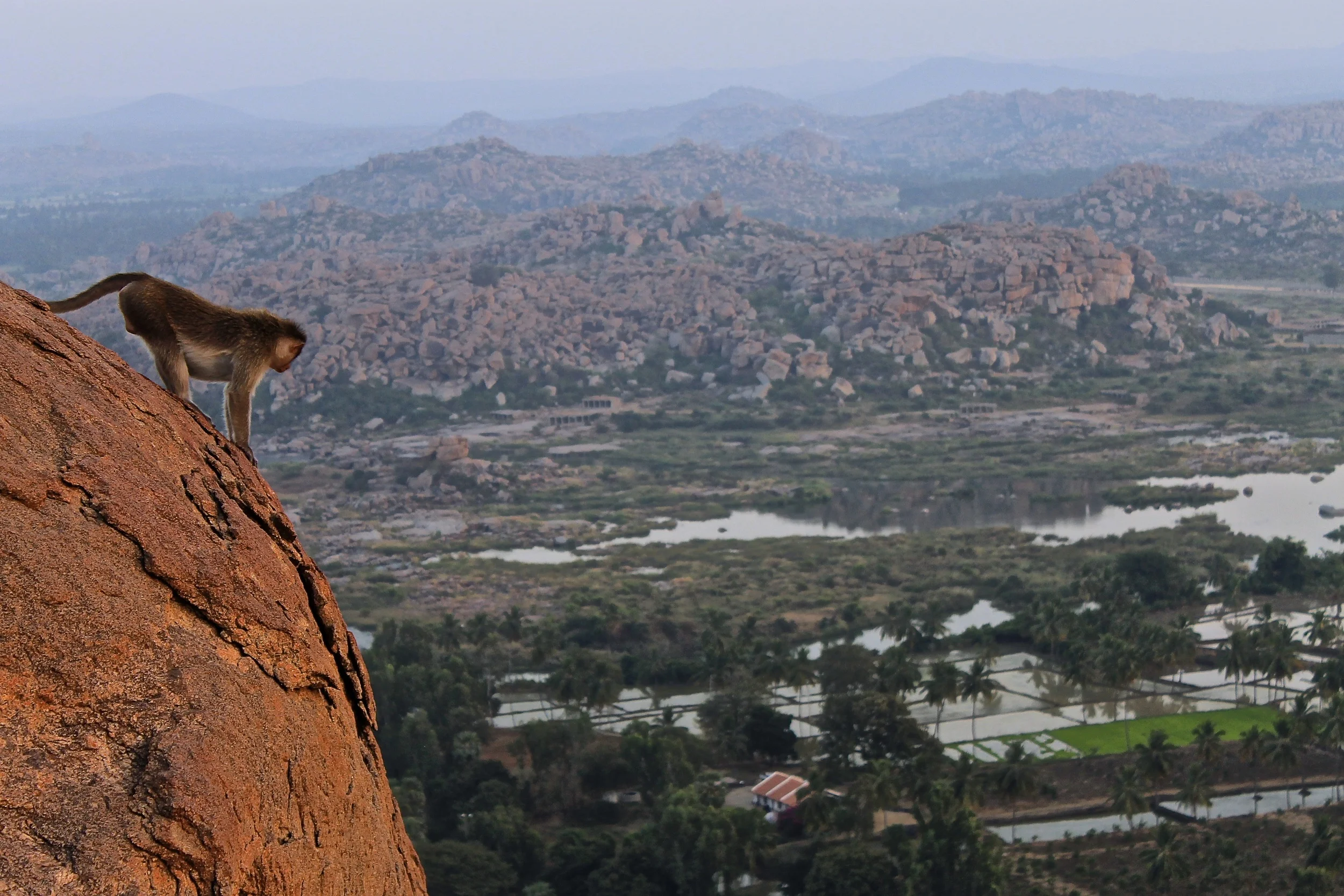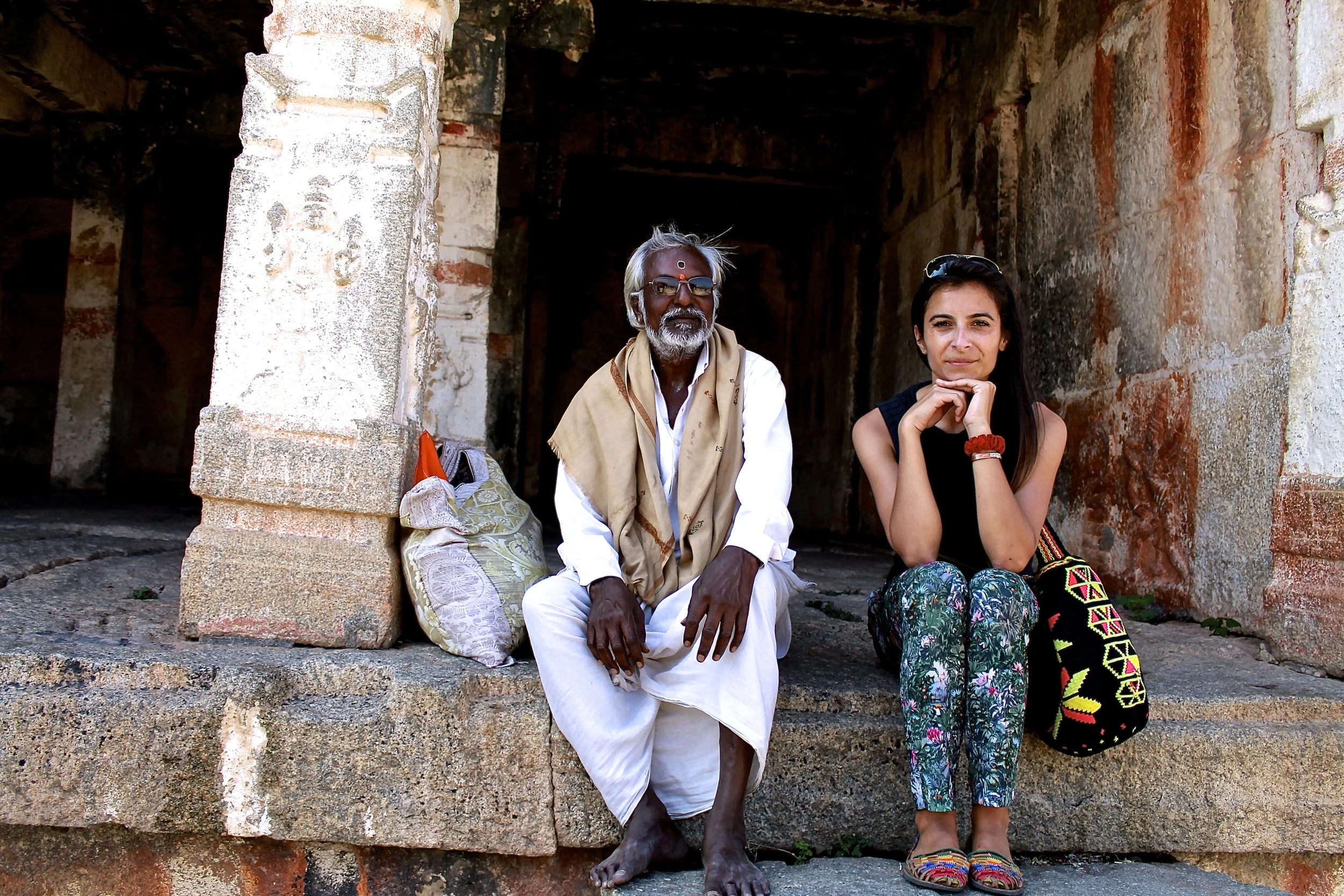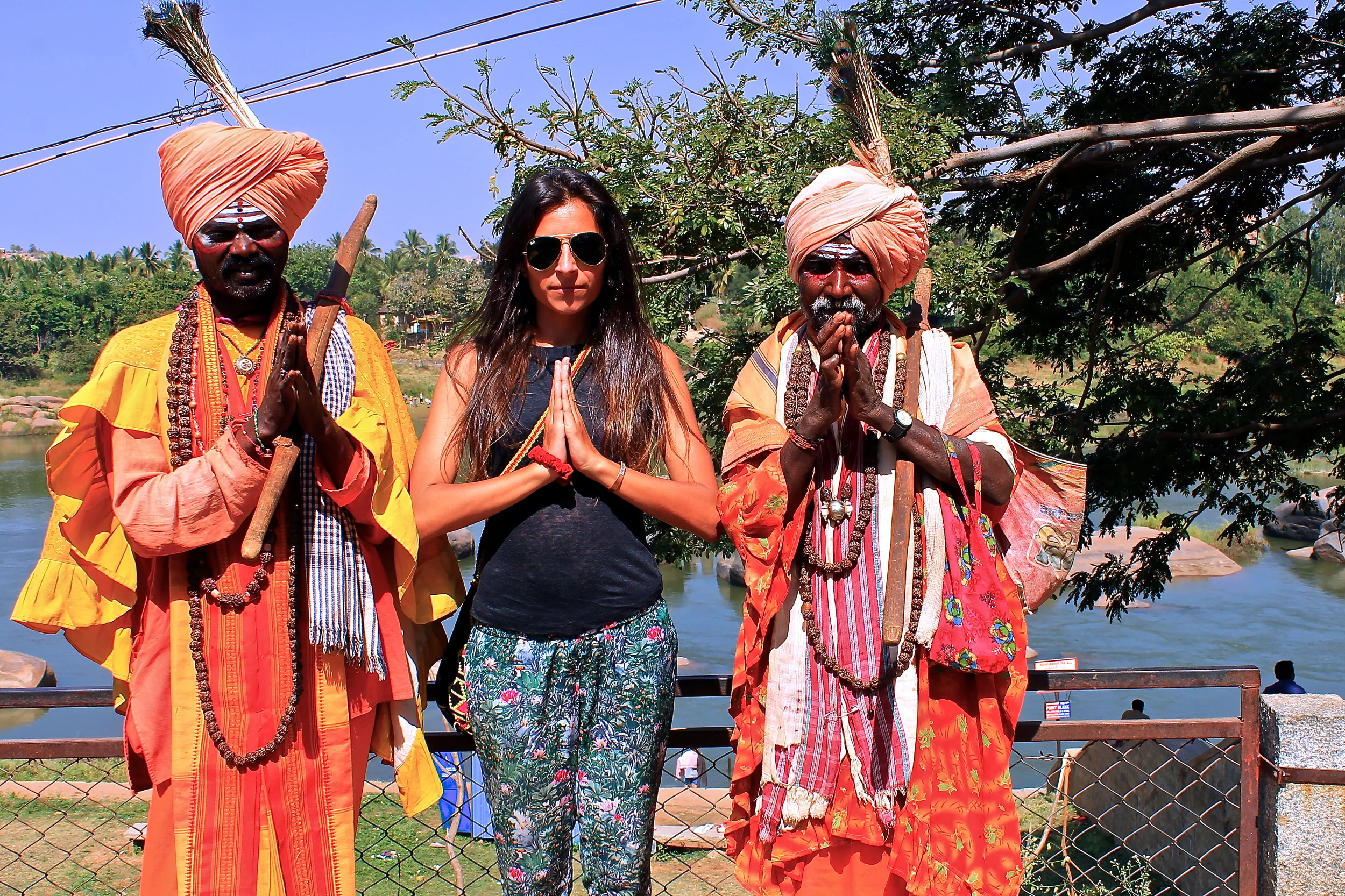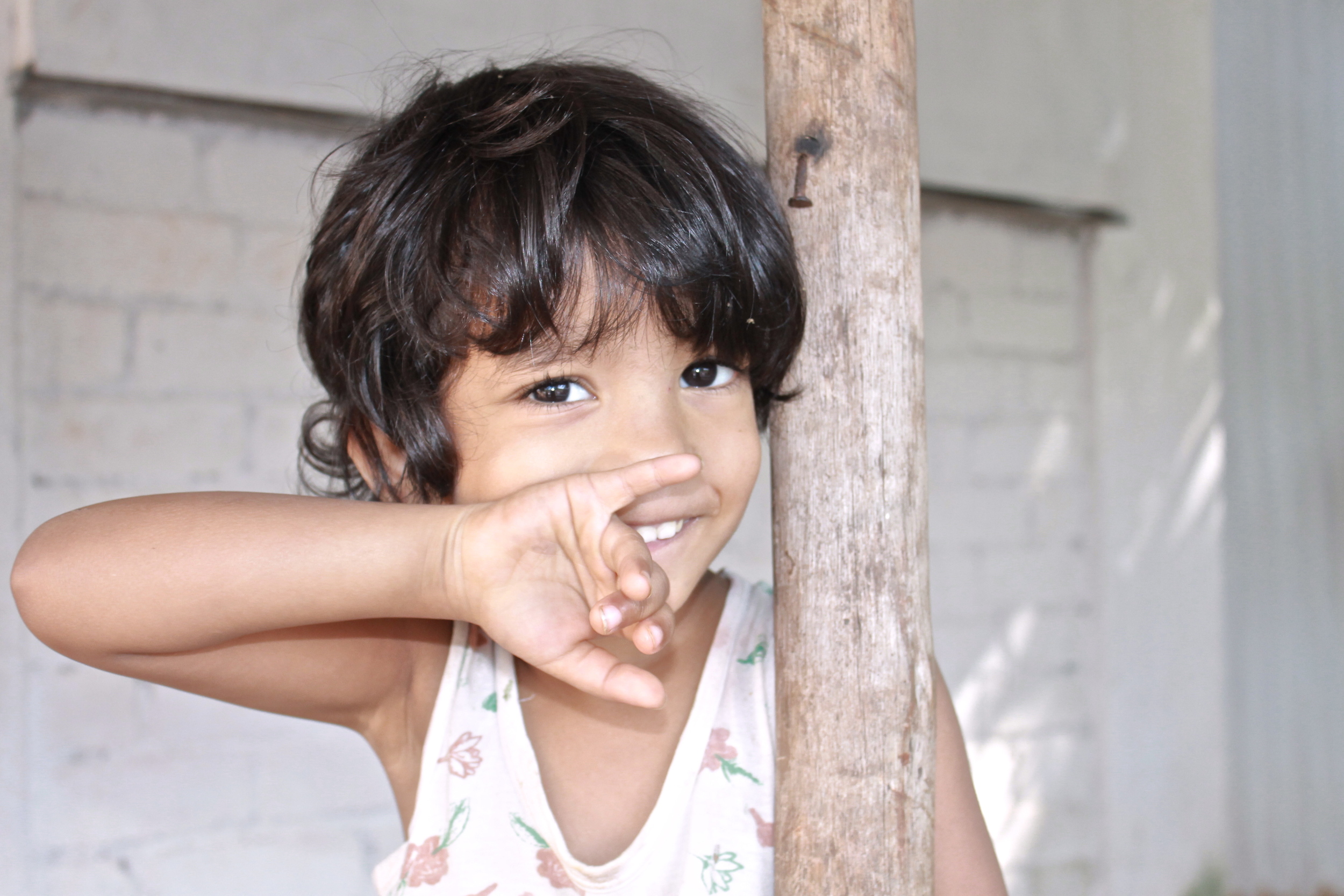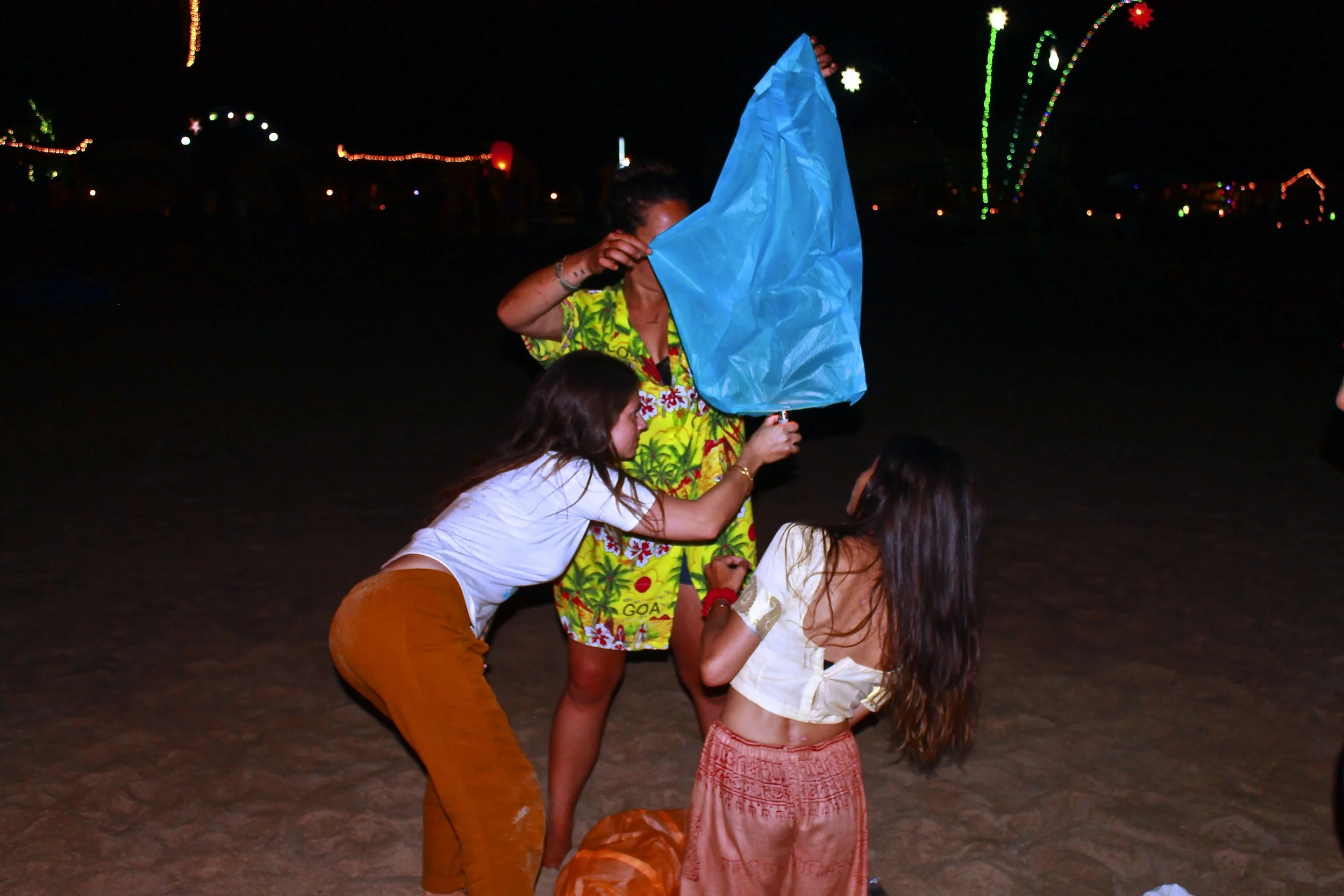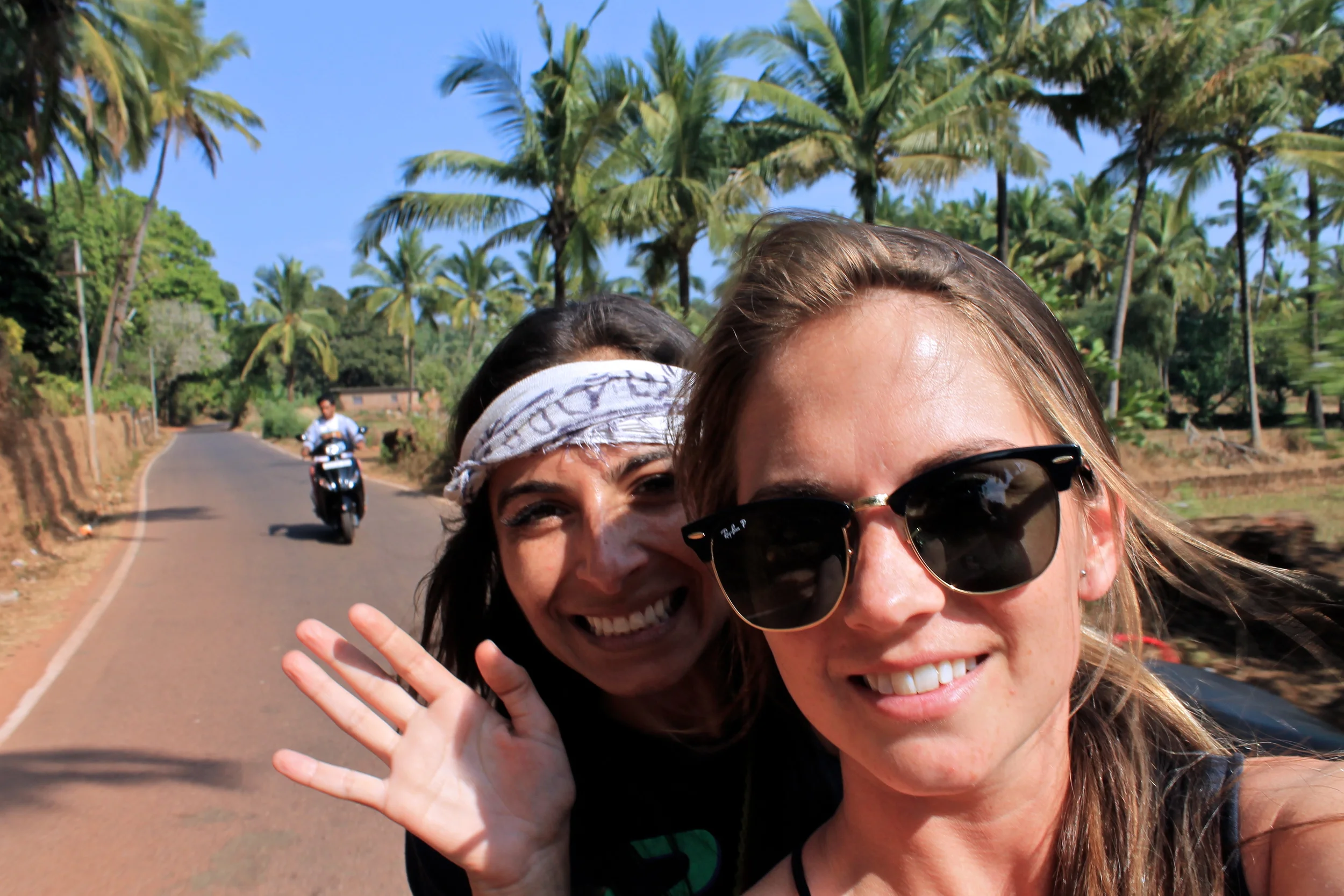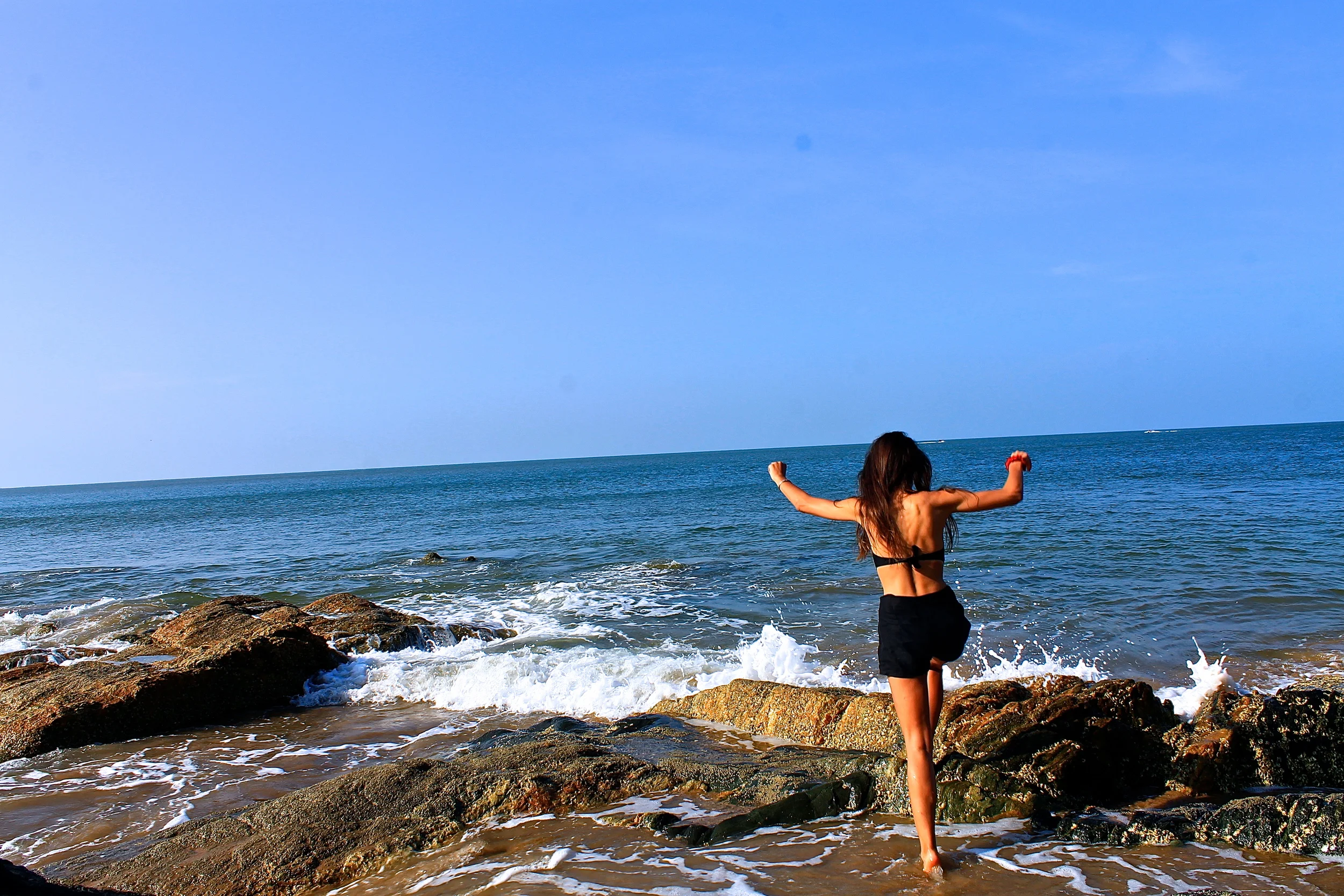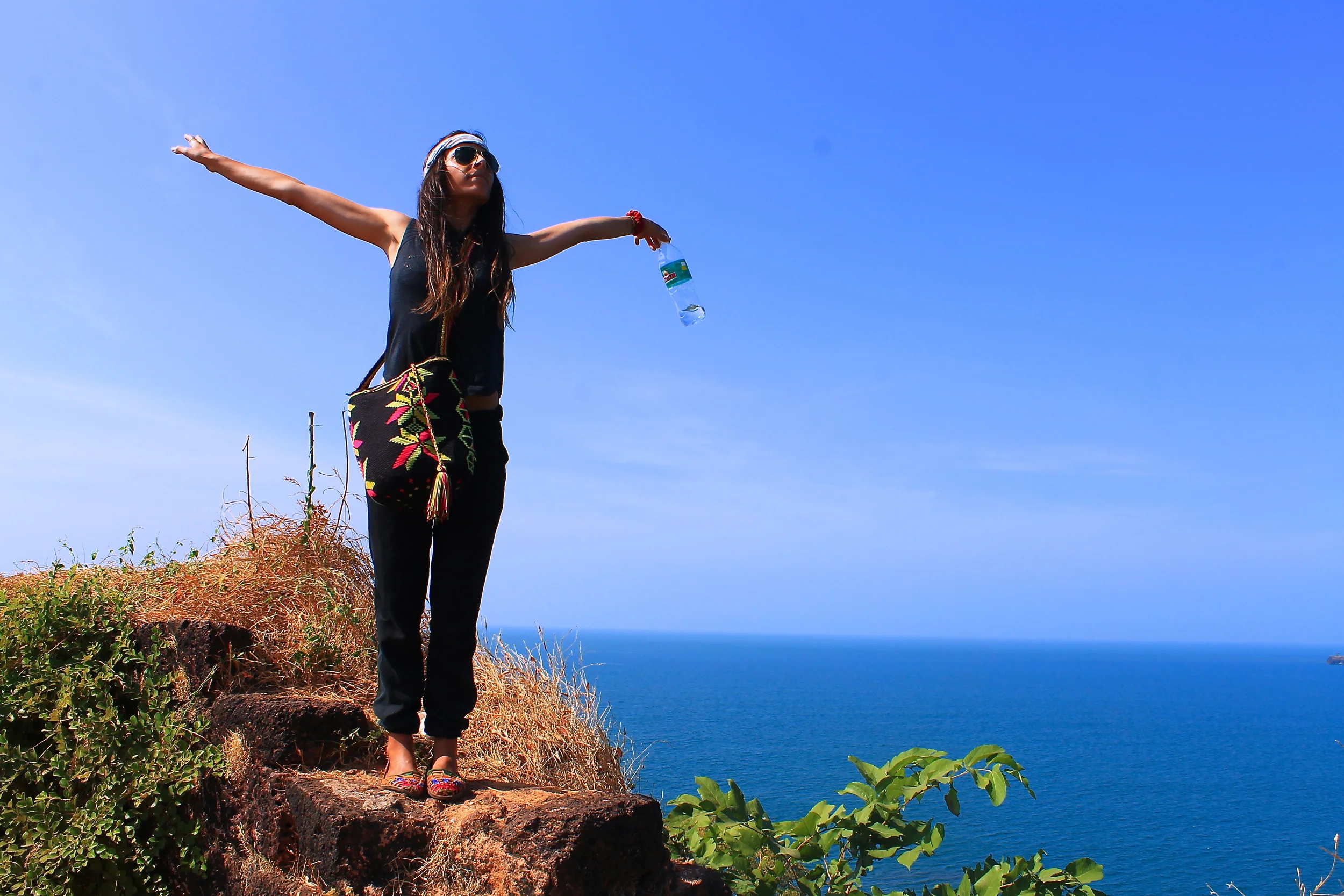


India Overview.
INDIA.
LOVE IT OR HATE IT, YOU'LL NEVER FORGET YOUR FIRST TIME.
India Overview.
INDIA.
LOVE IT OR HATE IT, YOU'LL NEVER FORGET YOUR FIRST TIME.
Maddening at it's worst, beautifully incomprehensible at it's best, India has so much to offer on and off the tourist trail.
Like a dizzying culture, fascinating history, great value, efficient transport and English speakers aplenty, to name a few.
Consider yourself warned: this is one of the few places in the world where even the most wizened traveler can still experience culture shock and sensory overload.
The best advice to minimize the negatives of travel in India: move slowly, pick a cooler time of year and pack an open mind. Expect everything you’ve always pictured as well as the complete opposite. We mean it when we say… you just have to be there.
Popularity & Rep
Popularity & Rep
Popularity AND Reputation With Travelers.
It's hard to understand and explain just why somewhere so often dirty, hot, ugly and full of hassle has such an appeal. The answer lies enigmatically with it being often the exact opposite.
There is just no way that it won't have an effect on you and if (like me and thousands of others) you leave after your first trip loathing it, you'll probably remember your visit fondly and be back many, many times.
Our Rating. 9/10
Your trip will be what you make of it. But once you learn to slow down, let go and let the wave of Mother India wash over you, you'll see what all the fuss is about.
Where The F*ck...?
WHERE THE F*CK IS INDIA?
Where The F*ck...?
WHERE THE F*CK IS INDIA?
GET YOUR BEARINGS.
Dharamsala, Kerala, Amritsar, Rishikesh, Varkala, Kashmir, Bombay...
The delicious exoticism of the subcontinent has so many flavors it might seem impossible to choose.
Rest assured, whether you're losing yourself on the glorious beaches of party-centric Goa or finding yourself amidst the madness of spiritual capital, Varanasi, India offers something for everyone.
“It’s worth noting that the southern areas of India are much less stressful than the major tourist destinations in the North but regardless of where you decide to start your romance with Mother India, you’ll find everything your looking for...and more.”

Visual Inspiration India
VISUAL INSPIRATION.
Visual Inspiration India
VISUAL INSPIRATION.
The Rad & The Bad
IN OUR HONEST OPINION.
The Rad & The Bad
IN OUR HONEST OPINION.
The Rad.
You can't really call yourself a backpacker until you can boast an India stamp in your passport. While you won't have the country to yourself, the lack of a hostel scene and the sheer size of the country make it easy to disappear into the daily rituals and routines of the locals, who will undoubtedly commit acts of kindness for you so consistently that you'll wonder what you did to deserve it. For those who want to stick to the beaten backpacker path, Goa offers a verified haven for a group of travelers so free-spirited, inviting and downright enlightened that it'll be hard to back your bags and leave. Come with a backpack, open heart and an empty bank account and you'll know what it means to say, "Namaste".
The Bad.
The hassle, distances, getting ill, dirt/dust, heat, big crowds at major attractions (for example Leh in the summer, Goa at Christmas or Agra anytime). Despite having the main must see cities in India (Varanasi and Agra) any travel in the state of Uttar Pradesh just about sums up the lowlights of Indian travel and it's worth mentioning that if you limit your travels to this area, Delhi/Bombay and Rajasthan state (see map of Indian states), you'll see some great sights, but have far more of your share of hassle, crowds, dust and dirt, than a more encompassing Indian trip and probably feel a lot more negativity about the country than someone who saw Goa, Kerala, the far north or somewhere more off the beaten track.
Vibe & Crowd Factor
Vibe & Crowd Factor
PEOPLE VIBE & CROWD FACTOR.
WHAT TO EXPECT.
LOCALS.
You'll find the touts, begging and "come to my brother's shop!" scams are much more prevalent (and annoying) in northern India, especially in the "Golden Triangle".
With so much hassle it's easy to get disillusioned, but in fact Indians are incredibly warm, kind and friendly people when you meet them outside of the context of tourism. Chat up your neighbor on the train, make friends with school children or smile at a stranger and you'll be rewarded with genuine warmth, generosity and hospitality. Trust your gut and follow your instincts if a curious new friend invites you home for dinner or to their sister's wedding --the best experiences in India happen in these little moments.
If you're a woman traveling alone, you'll find the local ladies looking out for you wherever you go -- whether it's pointing you in the direction of the ladies lounge or protecting you from unwanted male protection. If you ever feel threatened or unsafe, head for a group of women and they'll adopt you as their own.
“If you’ve ever had a public meltdown in India (especially likely in frustrating transportation situations) it may seem like Indians are unfazed by your obvious distress. I’ve found that if you simply address one individual in the group and ask for help, they will always exceed your expectations. After wandering around a bus station in Kerala, I enlisted the help of an unlucky snack salesman. Honor bound to help me, he spent nearly two hours making sure I was safe, sound and on my way.”
OTHER TRAVELERS.
Very wide range, including large numbers of domestic tourist that crowd notable destinations during high seasons. Aside from Indians you will find travels from all over Europe, USA and Australia/NZ, including as in Nepal/Thailand and South America, a large number of Israelis many of whom are fresh out of the army and seem to do everything they can to further worsen their reputation with locals and foreigners alike. And of course, being India you'll find many a non-too-talkative hardcore backpacker (everyone wants to think they are having the ultimate India experience) outside main tourist cities.
In the more popular parts of Goa you'll find an overwhelming number of Russians. Ashrams are also notorious gringo-haunts, especially the more internationally popular gurus such as Amma whose ashram in Kerala seems to be hosting the entire population of Sweden.
TOURIST SEASON.
October to mid-April before the July-September monsoon begins. More about this here.
BEST TIME TO VISIT.
Hill stations are best enjoyed from mid-September to mid-December and then from March to mid-July. Ladakh is best visited from June to September, when most other parts of the country are in the grip of the monsoon. More about this here.
Costs & Budget
COSTS, CASH AND OTHER MONEY MATTERS. SO YOU CAN BUDGET BETTER.
Costs & Budget
COSTS, CASH AND OTHER MONEY MATTERS. SO YOU CAN BUDGET BETTER.
REMEMBER,YOU GET WHAT YOU PAY FOR.
“A little extra goes a long way, especially when it comes to your sanity. While overland transportation is generally good, flights are good value and well worth it if you have the funds. Other advice is getting a double entry visa so you can pop to Nepal for a break from it all (more on that later).”
Per Day: US$10-$12
Average a bit more since the low prices make it so much easier to have a justify leveling up and encourage you to start buying/paying for things at liberty because it's "so cheap". With the exchange rate at an all time high for Americans, you'll get a generous 50-60 Rupees/dollar; enough to leave you marveling at just how much your hard-earned money can be worth abroad.
“Hoard your small bills religiously because change can be hard to come by and many locals will be more than happy to pretend they don’t have change so you have to overpay them”
Accommodation: $4-8/Night
Because India has very few hostels, single travelers unfortunately have to shell out for a double room, basically doubling the price per night. A more comfortable standard of accommodation, especially in larger cities like Mumbai will greatly increase any budget.
Activities & Extracurriculars.
Like other parts of Asia, the people, the culture and the architecture provide the majority of the entertainment and activities while you're on the road. Temples and sacred sights are often free of charge and shopping and at local spots and traveling via train can cost next to nothing. Even organized tours (like a tiger safari at Corbett National Park) can be more than affordable.
What To Pack
What To Pack
Packing Strategy.
Things are so cheap you don't have to worry about too much. Our Packing Survival Guide covers it for you, with a few specific notes on India:
- Visa: Americans can't get a Visa on arrival, so make sure you get one in advance.
- Warm Clothing: Remember that large parts of India are mountains or desert regions, so it can get pretty cool at night. The winter months (November - March) will see the subcontinent enjoying relatively cool temperatures and clear skies.
- Modest Clothing: Unlike other countries with a tradition of modesty, you will feel out of place in your cutoff shorts and a tank top in India -- even in tourist areas.
Guidebook Recommendation.
Lonely Planet is our absolute top choice for India, but Footprint and Rough Guides are also very good. Read our review of the top guidebooks here.
Very few travelers see all of India in one go, so the best bet is to buy a regional guide, say for the most popular destination of Rajasthan. Himalayas, Goa and South India guides are also available.
You will get a smaller, more detailed guide and when outside the region make your own way and ask to take a look at other travelers guides when needed.
“Unlike most other countries on the backpacker trail, India has yet to develop a hostel scene. This can make it difficult to purposefully meet other travelers, but also removes the fear of ending up on the Lonely Planet “conveyor belt”, which happens when all backpackers use the same guide book and end up staying at the same hostels with the same people at every destination”
Routes & Itineraries
ROUTES & ITINERARIES. TRUST US, WE'VE BEEN THERE.
Routes & Itineraries
ROUTES & ITINERARIES. TRUST US, WE'VE BEEN THERE.
Coming soon!
Logistics & Timing
THING YOU SHOULD KNOW BEFORE YOU GO.
Logistics & Timing
THING YOU SHOULD KNOW BEFORE YOU GO.
TOURIST SEASON.
Generally speaking, the best time to visit India is from October to mid-April. Summer season is from March to June, Monsoon from July to September, October is again a warm month and winter lasts from November to February.
WHEN NOT TO GO.
April - July: Avoid North and South Indian plains, as the heat can be unbearable
May - September: Steer clear of coastal areas
December-February & July -September: Hill Stations
October - May: Ladakh
GETTING A VISA.
Yes you'll need a visa. Valid for six months from date of issue (not from your entry into the country). Multi and single entry often cost the same. Many people do a double entry so they can pop into Nepal for a respite from the hassles, annoyances and heat of India before returning to finish up the north.
If you're American, do yourself a favor and send away for your Visa with plenty of time to spare. India will not give you a Visa on arrival and the embassy Visa process can be a harrowing experience, especially around the holidays.
PERMITS.
Restricted area permits are required for the following states in India: Sikkim (15 days, get in Siliguri), Andaman Islands (30 days - issued at the airport if flying in, if coming by boat you'll need to get in advance). Permits are no longer needed for Assam, Tripura or Meghalaya, but you still need one for Manipur, the Arunachal Pradesh, Mizoram and Nagaland.
LANGUAGE.
Most locals speak English or can quickly produce a brother or an uncle who can get your message across.
INTERNET & COMMUNICATION.
Loads of internet access, but often slow. Phone calls home a breeze to make from numerous call shops and international rates very reasonable. Most guesthouse will also accept incoming calls if requested.
CASH/ATMS.
You can find loads of ATMs and credit cards can be used for large items such as plane tickets. In tourist areas virtually any hard currency cash changes (you name it CHF, AUD, CAD and so on), but Euros, GBP or US$ will be easiest overall. Also worth mentioning is the importance of smaller denomination rupee notes because change can be hard to come by, so break larger notes when you can and hang on to the small 10 & 50 notes.
If you’re in a bind, head into a travel agency and ask for a cash advance from your credit card. Most will do it for a small percentage.
Transportation
Transportation
TRAINS.
No trip to India is complete without a ride on it's great rail service (www.indianrail.gov.in), which also happens to be the world's biggest employer. There is so much that can be written on train travel in India, it has had to be given its own page.
Click here to view: Indian Railways Explained.
Outside of this page it's worth noting you can now reserve ahead on the internet (although fairly slow) and popular routes (Mumbai-Goa and Delhi-Agra) and popular trains (such as expresses or sleepers) can fill up fast, since in India people look to trains first and buses second.
Getting a ticket can be a hassle, but many routes have foreigner quotas which can be a real life saver. Many agencies offer train booking services and major stations have special offices for tourists.
Outside of India the website Clear Trip will let you use an international credit card, check availability and is often recommended.
Flights.
If you're on any kind of time crunch, Indian airlines are a great option. Indian trains are great, but costs in more comfortable classes add up and after 25+ hours on the same train you might wish you looked into flying.
Many other new budget airlines have recently started business in India, but be warned that popular flights in peak seasons (i.e. Bombay to Goa) will be booked up in advance. If you really need a flight for a short trip where time is important, book ahead on the web (Spice Jet & Jet Airways both good).
“A real bonus is a 30% discount is offered for under 30s on internal Air India flights making for great value, but obviously this line gets booked up first. Some budget airlines charge a ‘foreigner price’ which is much higher than the normal fare. Make sure you double check with your agent or enlist a local friend to book for you”
Remember this is India and cancellations and delays are likely (fog during winter brings the network to a standstill) - so if making connections allow plenty of time - Jet and Kingfisher seem to have the best reputation.You will also need your printed confirmation to be able to get into the airport building.
Internal Indian airlines include: Air Deccan, Jet Airways, Air India, Air India Express, Go Air, Paramount Airways, Alliance Air, Air Sahara, Indigo, Blue Dart, Spice Jet and Indian Airlines.
If you're traveling to Nepal, a flight to Kathmandu is a great option as the road trip from Varanasi takes two days (with a night stop). Easy to arrange from Calcutta, Varanasi or Delhi.
Bus & Hired Car.
Local and government buses can be okay, but aren't much fun for long distances: private (as in not operated by the state) buses or shared taxis are much better - all run frequently. Some tourists in Rajasthan and other areas hire a car and driver for several weeks. This can be a great idea, but only if you can tolerate (and trust) your driver for long stretches of bumpy road.
Accomodations
IF YOU NEED SOMEWHERE TO SLEEP.
Accomodations
IF YOU NEED SOMEWHERE TO SLEEP.
Per Night. $4-8USD
Loads of cheap guest houses, although most are a little hot, noisy and basic. Middle range rooms with AC are worth it at times. If you are hitting Goa at New Year or a tourist attraction during a festive, get there earlier or book ahead, otherwise there is plenty of accommodation and touts who will help you find it.
GOOD TO KNOW.
Don't count on wifi in your guesthouse.
TEMPERATURE & HOT WATER.
Hot water is normally available, although not so much in the south - it all depends on your budget: a little buys you a lot more. Note, however that hot water can often be charged extra on top of cheap rooms.
Food & Drink
FOOD, DRINKS & OTHER GOODIES.
Food & Drink
FOOD, DRINKS & OTHER GOODIES.
FOOD.
India has no shortage of fantastic food, and tons of variety. For vegetarians, it's a genuine heaven on earth.
However, getting sick (or the fear of it) makes most travelers a little weary. Basic rules to avoid the dreaded "Delhi Belly" can be found on our Backpacker 101: Health and Safety page.
“Locals often use their hands to eat, especially in Southern India where you’ll learn to perfect the “finger shovel” after a few go arounds. Keep in mind that only the right hand should be used to touch food.”
DRINK.
CHAI.
The chai in India is a sensory experience that should not be missed.
ALCOHOL.
Goa has the most relaxed take on alcohol, so if you're looking for a bender -- head straight to the beach. Outside of Goa, each state has it's own rules. Kerala, for example, is very strict, although beach restaurants in places like Varkala will serve you (sometimes in a teapot!) if you smile and wink.
Dangers & Health
Dangers & Health
HEALTH.
It's likely (but not certain) that as a traveller you will suffer at some stages from diarrhea or constipation or worse, food poisoning during a prolonged stay - don't let this put you off. It doesn't happen by default to everyone and when it does, usually passes quickly.
DANGERS.
Sometimes simply letting it all get to you, although you should also watch out for petty theft.
Be extra careful on overnight trains, with small bags on buses and always in Delhi. If on your own be on extra guard. Little scams are very common and can lead to a jaded experience. Be sensible: avoid Kashmir if your government advises.
Terrorism is also flagged as a concern by many, but in the big picture of Indian travel will be fairly low down your list of worries.
WOMEN TRAVELING ALONE.
Lone female travels need to be extra careful traveling as Indian men will be very friendly and certainly do not engage in any tours, travels or long journeys (i.e. taxi charter) with only Indian male counterparts. Wearing a wedding ring or inventing a "husband waiting for me at the hotel" can put off unwanted attention. As a woman alone, it is important to realize that, yes, men will stare at you (sometimes leaving no doubt about what their thoughts are!) which is not taboo in India.
A few more things to avoid:
- Don't walk around alone late at night, especially in smaller towns without a big backpacker scene
- Don't drink in bars alone
- Don't be over-friendly with local men (coed platonic "tomboy" style friendship basically doesn't exist in Indian culture) or they will get the wrong idea
- Don't be too flirty. India is not a Girls Gone Wild sort of place where you will be appreciated for being sexy, brazen, or debauched.
- Don't forget to avoid PDA, even with your western partner
“I’ve found that wearing sunglasses really helped when walking around in cities like Mumbai. Either the men weren’t sure that I was a foreigner or found it harder to catch my eye, but the amount of unwanted attention significantly decreased.
Also be careful of touching men or sitting too close to them, especially older Indian men. While you’re just being friendly, they may find it too forward and become uncomfortable — even with something as simple as a handshake.”
Hassle Factor
KNOW BEFORE YOU GO.
Hassle Factor
KNOW BEFORE YOU GO.
Hassle & Annoyance Factor.
This depends very much on which part of the country you visit. In a place like Kerala you shouldn't have much trouble, but in Uttar Pradesh it can push you to your limits. On the whole there is a lot of hassle in India and it's generally as in your face as it gets (although as mentioned regions do vary - north worse than south, rural versus cities,etc.).
Learn to be cool: don't get bulled, be firm and humorous when talking and after a few weeks you will get less of it. As brilliant as India is, no one will kid you it doesn't take a lot of getting used to and adjusting. Well worth reading is the dealing with hassle and beggars section of this site.
Women Alone.
We're going to be honest -- expect a lot of unwanted attention.
To respect Indian sensitivities when in public Western women should wear skirts below the knees or longer or relatively loose slacks, avoiding sleeveless tops, tight trousers/pants, and shorts. Young women and teenage girls, especially those dressed in tight or short Western dress, may attract undesirable attention.
These suggestions are especially important when visiting rural areas or tradition-bound urban areas. More information on the topic on our Dangers & Health page.
Drugs & Distractions
DRINKING, DRUGS & OTHER DISTRACTIONS. DON'T BE STUPID.
Drugs & Distractions
DRINKING, DRUGS & OTHER DISTRACTIONS. DON'T BE STUPID.
Bhang
A legal yogurt drink (lassi) made from the leaves and shoots of hemp that you can find in most places, especially during Holi. The common effect is getting fairly stoned, but sometimes you will feel no effect, other times you will be dangerously off your head and quite unwell. It seems impossible to gauge the strength of these drinks.
Pot
Currently illegal, although you will see Hindu holy men smoking it frequently. That said, it's easily available in mountain regions, Pushkar, Goa and many others.
Alcohol
Goa has the most relaxed take on alcohol, so if you're looking for a bender -- head straight to the beach. Outside of Goa, each state has it's own rules.
Kerala, for example, is very strict, although beach restaurants in places like Varkala will serve you (sometimes in a teapot!) if you smile and wink.
Soul & Surf provides flasks for guests. Did we mention they're one of our favorites?
WE'RE A NEW SITE, AND EVERY SHARE COUNTS.
Like what you read? Give us a share on Facebook by clicking the handy button on the bottom right ⤀
Indian Rail Travel
WE PROUDLY PRESENT OUR GUIDE TO INDIAN RAIL TRAVEL.
Indian Rail Travel
WE PROUDLY PRESENT OUR GUIDE TO INDIAN RAIL TRAVEL.
WHAT IS THE TTE.
You have to show the ticket to the TTE (Traveling Ticket Examiner) on request. He wears a dark blazer with a name badge over his white shirt and always carries a chart board with a huge clip over it. You can ask him any questions from swapping your seat to the next coach where your friend's berth is, arrival & departure times, which train is the best to reach Shimla, how many children he has (it will be appreciated!) etc.
If you want to extend your journey in the same train he can do the same and give you the receipt. He can also upgrade your class based on availability and you can pay and get the receipt during the journey itself.
VENDORS.
A train is a big bazaar on the move and all the services are thoughtfully customized so that they can be easily sold through the 4inch gap of the window grille! If you are sitting at the window seat, co-passengers may request that you pass their purchases. Carry coins and small change.
Stops: Generally the train stops for two minutes at a station, but at key stations it can be up to 30 minutes. A frenzy of activity (buying, selling, getting in, getting out) takes place in two minutes before the train slowly starts with a long whistle.
Reservations: You can make a reservation at any of the Indian Railway reservation counters in India. If booking from abroad, you can plan your journey, check seat availability and book tickets relatively easily online at http://www.irctc.co.inor Clear Trip. You need to carry to same photo identity (passport photo copy is okay) that you used to book the ticket to validate the e-ticket for travel. A refund is made on the card if you cancel the ticket later, up to 4 hours before departure of the train.
Indrail Pass: Available for foreign tourists, but not worth getting unless you'll be traveling extensively by train.
Foreign Quota: There are special quotas for foreign tourists who are disorganized and didn't make a reservation. Enquire about this at the reservation enquiry counter which are generally open 8.00am-8.00pm weekdays and 8.00am-2.00pm on Sundays.
Tatkal, Or Emergency Tickets: Lazy travelers rejoice! This is an emergency reservation scheme introduced in selected (about 100) trains, indicated with a T at the end of their train number. The reservation for these seats starts five days (at 8am to be specific) before the day of the journey. All the Tatkal (means immediate) tickets come with a premium of Rs50 to 200 extra depending on the class. You need to produce a photo identity card (passport, Driving license, Credit card etc) at the reservation counter. The same will be required inside the train by the TTE. These tickets can't be cancelled or refunded.
Read on to learn about ticket types.
Second Class (General Compartment).
This is one of the cheapest ways to travel in India and perfect for a short trip and a great feel of India. The catch is you will not have any seat reservation or sleeping berth. If you manage to get a seat there is no guarantee that you can hold on to it. You need to "reserve" the seat you occupied by keeping your luggage or any other personal objects on the seat when you go to toilets etc. Just buy the ticket from the counter at the railway station, even when the train is standing at the platform ready for departure.
The facilities are bare minimum. Food is available from vendors. 4 toilets (squat type) with water are attached to each coach. Fans are provided. Two washbasins are also provided at both the ends. Bring a small chain and a padlock to secure your luggage beneath a seat or to the luggage rack.
These coaches get phenomenally overcrowded during the Indian summer season. There is a large passenger overflow into second class from other classes due to the overbooking of reservation seats.
If you want to get a feel of the raw India, this is your best bet and fellow passengers are generally more than happy to talk to strangers. A foreigner generates a lot of curiosity and you take the first step in winning the co-passengers’ confidence -- but be prepared to be bombarded with personal questions. The first would invariably be ‘from where you are coming?’ ‘What is your profession?’ Then it could be how much you earn a month. Go with it and you'll be surprised what you'll learn!
Second Class Sleeper (SL).
If you're a budget traveler, this is probably the best bet for you. You need a prior reservation for a spot in SL which can be made 60 days in advance. The seats are grouped into sort of semi-private sections of 6 bearths, or beds, and are known as Upper berth (UB), Middle berth (MB) and the Lower Berth (LB). Chains are usually provided to secure your baggage but you'll need to bring your own padlock.
“Try to avoid if possible the first and last 16 seats of the 72 seats in each coach as these are close to the doors and toilets and don’t forget a padlock, toilet paper and sheets if you need them as they won’t be provided in Second Class Sleeper”
The lower berth is the seat for all three during daytime, though the lower berth passenger generally gets the window seat during the daytime. The upper berth is undisturbed and can be used for sleeping even in the daytime. On the other side of the walkway there is a row of "Side Berths". They are twin seats facing each other. If you are more than 5.5 feet, these side berths are slightly short for sleeping. But both of these are window seats and you will offer little trouble for the other passengers if you want to get out of your seat. Don't get offended if an old passenger asks to exchange your lower berth with an upper berth.
If you get on the wrong car, it can be a HUGE pain and a lengthy endeavor to find your assigned seat, so prepare ahead of time and strategically position yourself when your train arrives at the station. Your name is listed on a chart stuck next to your coach's door outside. A copy is also displayed at the departing station "Reservation Chart" notice board about an hour before departure. These coaches are indexed as S1,S2, S3 etc. Lookout for a square white paper label to the side of the door with the coach number marked on it. The same is printed on your ticket also. Most of the stations have a notice board indicating the position of the coaches from the engine. If this is not displayed ask any staff you see at the station for your coach’s location. If you can find out the location of your coach prior to the arrival of the train you can avoid madly running up and down along the length of the train with your pack. No bedding will be provided in this class, but without AC it is unlikely to get too cold.
The bathroom situation is less than ideal, but not awful-- bring your own TP. These coaches are provided with 4 toilets (one western). The squat type is more hygienic in a train. Using them in a moving train needs some experience. This is a stainless steel toilet bowl with footrests set into the floor. There are two latches for the toilet. One is a twin latch that can be opened and closed from both inside and outside. The other can be operated only from inside the toilet. Lock this one when you are inside and leave the other one open. This gives the indication from outside that it is occupied. Early mornings are a bit crowded at the toilets. You can use the washbasin located outside the toilet for teeth cleaning, face washing etc. The toilets are more or less similar for all classes.
AC 3-Tier Sleeper (3A).
This is the air-conditioned version of the Second Class Sleeper. Most of the express trains have about 2 to 3 coaches of this type. More comfortable than Second Class Sleeper and also a bit more spacious and as with all the following increasingly more expensive classes less likely to be rammed packed and thus much easier to relax and sleep. The windows are tinted and do not open, so you cannot enjoy the sights outside like in Sleeper Class - but it's easy to walk to the next carriage and hang out the door and return when you have had enough for the noise and heat. This is recommended if you need to travel in a bit more comfort, especially during the summer. Bedroll available inside the coach free of charge. Most of the facilities are comparable with Sleeper Class.
AC 2-Tier sleeper (2A).
Many express trains have a couple of coaches of this class. More luxurious than 3A. You can find the well-to-do Indian class in these coaches. This is a good asylum for those who don’t want to join the crowd or expect luxury rather than economy. All the facilities available in SL are available here also. Bedroll available inside the coach free of charge.
First Class AC (1A) .
The highest luxury class on regular routes. Cost comparable with economy class airfare. A number of important long distance trains have these coaches. The elite class and business executives travel by 1A. You can travel in this class for days without even having eye contact with a co-passenger. People tend to mind their own business (the usual stuff of newspaper reading, staring at the laptop screen, acting sleepy etc).
AC Chair car (CC).
Generally attached to the day running trains only. Looks more like economy class in a plane, but with a slightly wider seat. Cost is a bit less than 3A. OK for decent day travel. Many day running express trains have this class.
First Class (FC).
This is the legacy first class coach, which does not have AC. Cost between 2-Tier AC and 3-Tier AC. Spacious. You need to ask the station manager prior to getting on the train for a bedroll. Cost Rs20 per bedroll.
Express Trains.
There are a number of special trains called Rajdhani (means capital) and Shatabdi (means centenary) express. These trains have only the luxury class coaches. And they are the fastest of all trains in India and well worth taking. Rajdhani Expresses run between Delhi and many important cities. Shatabdi Expresses run between important cities. Shatabdi is a day running (no sleeping berth) train.

